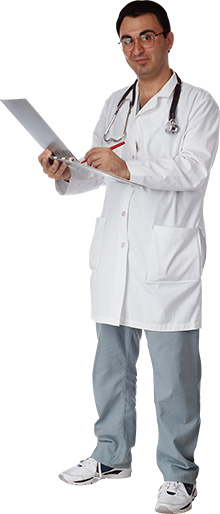- The mechanism of the appearance of the disease
- What is residual cough?
- Treatment methods
- Additional recommendations
- Preventive measures
Parents often have a question, why does the child continue to cough after therapy and how to treat residual cough in a child? Answers can be found below.
The mechanism of the appearance of the disease
The respiratory systems of a child and an adult have the same structure and include the airways and lungs. The first consists of the nasal cavity, nasopharynx, oropharynx and oral cavity, larynx, trachea and bronchi. The function of the respiratory tract is to conduct, warm up, moisten and purify the air entering the lungs. In the lungs, gas exchange takes place directly: oxygen enters the bloodstream and carbon dioxide is removed.
For optimal performance of the above tasks, the airways have certain structural features. Thus, the nasal cavity is lined with a mucous membrane, covered with a multitude of cilia, the function of which is the purification of inhaled air. Also there are mucous glands involved in the release of air from pathogenic microorganisms. Under the mucous membrane are the choroid plexus, providing warming of the air.

But not always complete air purification occurs when passing through the nasal cavity. Therefore, in the pharynx, and in the larynx, and in the bronchi, and even in the pleura (lining of the lungs), there are receptors that respond to stimuli both from the outside and from the inside. As a result of irritation of these receptors, a sharp contraction of the pectoral muscles and diaphragm occurs, and the air, along with the stimulus, comes out of the lungs - a cough appears. Thus, a cough is a protective reaction of the body.
What is residual cough?
During respiratory disease, the upper respiratory tract is first affected (nasal cavity and pharynx), children develop a runny nose and sore throat. With a weakened immunity pathogens, which are most often viruses, fall into the lower respiratory tract - the trachea and bronchi. Often, at 2-3 days of illness, a viral infection is complicated by a bacterial infection. The mucous membrane of the trachea and bronchi inflames, being a substrate for the reproduction of pathogenic microorganisms, becomes edematous. The viscosity and amount of mucus in response to the inflammatory process increases, and, in order to avoid blockage of the lumen of the respiratory tract, a cough appears.

After defeating the causative agents of the disease, the mucous membrane of the lower respiratory tract is not immediately restored, so during the time it takes for regeneration, it remains more sensitive to the effects of any irritants, whether it is too cold air, a pungent odor or dust. As a result, children continue to cough. In this case, coughing occurs from time to time and is not accompanied by sputum separation, there are no other symptoms of the disease. Even without any treatment, the presence of residual cough in a child completely disappears.
What, then, depends on how much residual cough will persist? First, from the intensity of immunity and the frequency of respiratory diseases, and secondly from the conditions of stay. If the child’s location is smoky, dusty, then the recovery period is lengthened.
Should I treat residual cough in a child? If these are actually residual effects after the illness, then you should not use any pharmacological drugs without a doctor's prescription in order to avoid negative consequences. Nevertheless, it is worth supporting the weakened body of the child on the way to recovery.

Treatment methods
There are a number of simple measures that will help cure residual cough after ARVI and other pathologies:
- One of the simplest, but effective methods that promote cough relief, is regular airing of the room in which the child is located. Airing is carried out 3-4 times a day and always before bedtime. In the warm season, the windows can not be closed, but care must be taken to ensure that there are no drafts due to the windows that remain open.
- It is necessary to exclude the contact of the child with tobacco smoke, kitchen burns and dust, which remain the most powerful irritants of the respiratory mucosa.
- Avoid sudden changes in air temperature. Given this recommendation, you should be especially careful when airing during the cold season.
- The next important point is to comply with the level of humidity. This issue is particularly acute in the winter season, as working batteries dry the already insufficiently moistened air. A hygrometer is used to determine the level of air humidity; Normally, the humidity should not be less than 50%. To maintain this indicator within the limits of acceptable values, apply humidifiers or put a wet towel on the battery.
- It is necessary to prevent the child from contact with various allergens that irritate the mucous membrane of the respiratory tract of a healthy person and even more aggressively affect the damaged membrane.
- Exercise of physical therapy and exercises of breathing exercises have a very positive effect. Such exercises effectively improve the body's immune defense, have a tonic effect, and optimize the functioning of the respiratory system.
- One of the most effective ways to speed up the restoration of the respiratory tract is vibratory massage. It is done in the following way: with a palm edge, lightly tap on the ribs on the side of the spinal column, the duration of the procedure is 1-2 minutes.
- It is very useful to inflate balloons in order to train and restore the respiratory organs. But you should be as attentive as possible, as ballooning can provoke hyperventilation of the lungs. An alternative method is to play toy wind instruments - trumpet, harmonica. The same effect has a whistle.
- The diet of the child should be balanced, include all the necessary vitamins and minerals in sufficient quantities. Fresh fruits and vegetables should be present on the baby’s table.
- By appointment of a doctor, you can undergo a course of physiotherapy, this will have a general strengthening effect and will speed up the final recovery.
- From time to time it is worth rubbing the baby’s chest and feet with badger or bear fat, then be sure to wrap it up. This simple procedure helps to achieve an excellent warming effect and get rid of cough, if this condition persists after SARS.
- It is necessary to give the child a warm drink in sufficient quantity: in the evening - a glass of warmed milk, you can add honey, onion juice or a spoonful of butter, as well as cocoa butter, soda or goat fat. Alternative to milk is eggnog - a drink made from egg yolks and sugar, famous for its ability to help with coughing.
Additional recommendations
There are some medications that can make cough treatments faster and more effective:
- In the absence of an allergic reaction to plants, it is useful to carry out inhalations using herbs such as coltsfoot, eucalyptus, yarrow. Inhalation with essential oils of fir, sage, pine have a positive effect. Also used a mixture of herbs, such as a mixture of chamomile, St. John's wort and lime color is very helpful in the treatment of cough. Steam should not be hot, only warm. If a nebulizer is used for inhalation, then it should be a compressor or ultrasonic device.
- Not bad helps infusion of green cones. For its preparation 1 tbsp. l crushed cones in the evening pour a glass of boiling water and leave until morning. Honey is added before use.
- A mixture of carrot juice and radish juice also has a healing effect, the composition is seasoned with honey.
- If necessary, only after consulting a doctor, you can use various expectorant drugs: syrups, mixtures, tablets. But in no case should you prescribe such drugs to your child, as with tuberculosis, the use of drugs in this group may cause bleeding. Do not take expectorant and antitussive drugs at the same time, as their combined use can lead to congestion in the lungs, and possibly to pneumonia.

Parents should be extremely careful to assess the condition of the coughing baby.
If there are no other symptoms of the disease, but the child continues to cough for more than 3 weeks, this should be alerted in terms of the development of possible complications of the illness. In addition, a prolonged cough may be due to cardiovascular disease, thyroid disease, tuberculosis, or an oncological process. How to cure these diseases, it is known only to narrow specialists. Therefore, the treatment of such conditions should be dealt with exclusively by a doctor.
Preventive measures
So, the following questions are addressed: how to cough cough, how to treat residual cough and some others. Now it remains to discuss how to prevent re-infection of children.
One of the important aspects of this issue is the hardening of the baby. You need to harden only healthy children and do it gradually.
In addition, it should provide a complete balanced nutrition of the child. In order to avoid re-infection, you should limit the communication of the cured baby with unhealthy children.
What is residual cough?What, then, depends on how much residual cough will persist?
Should I treat residual cough in a child?



